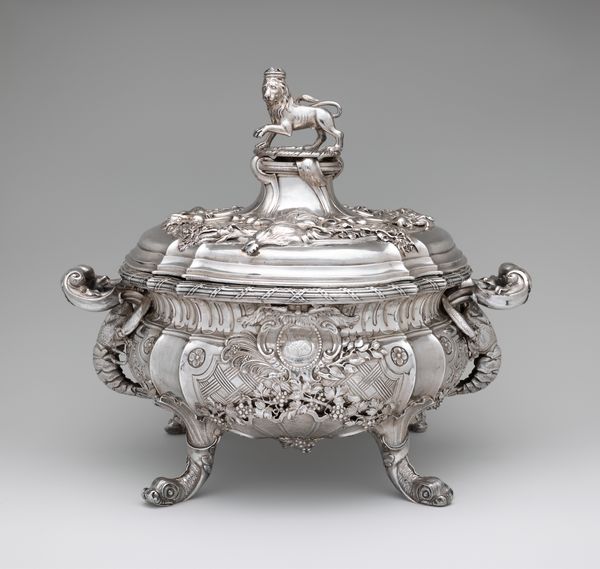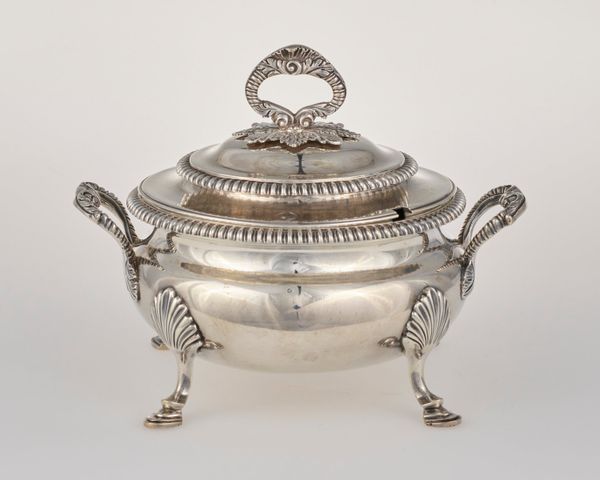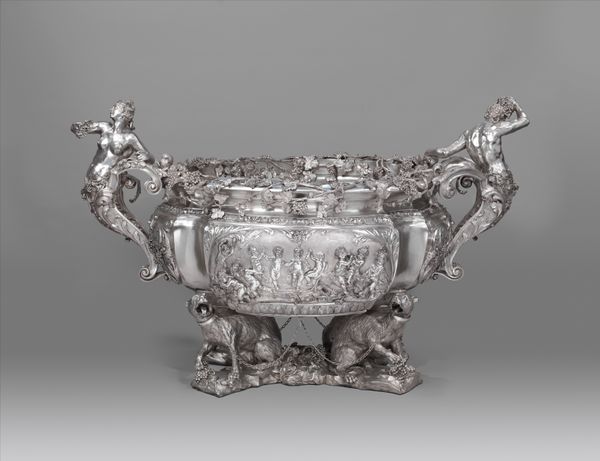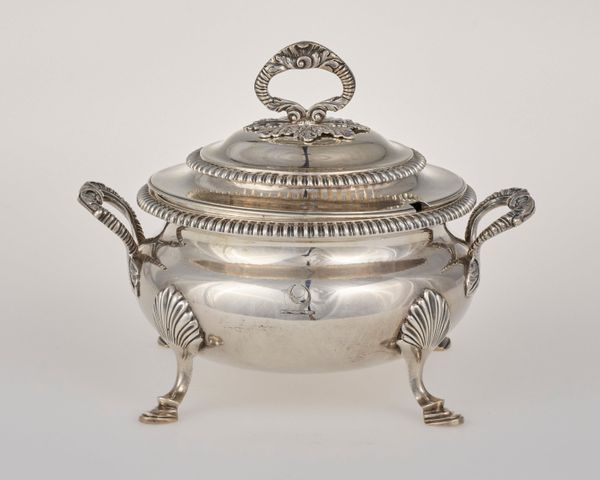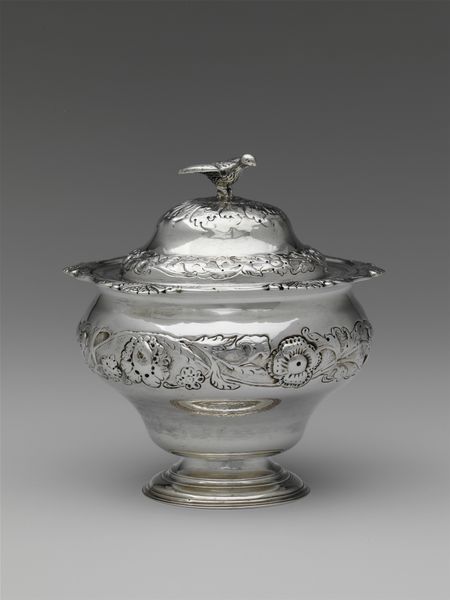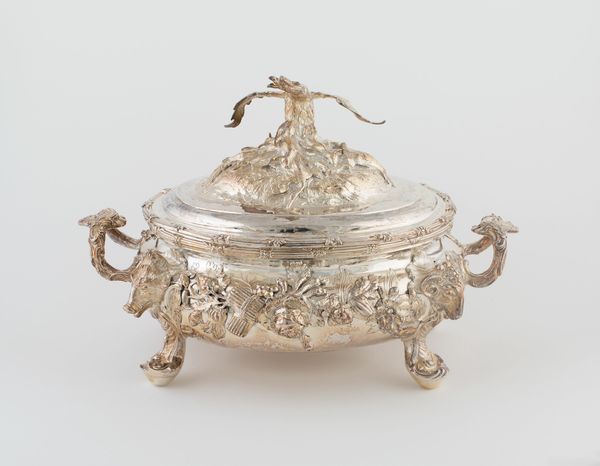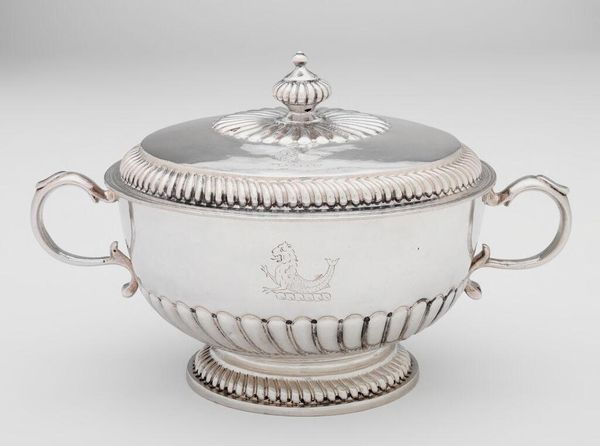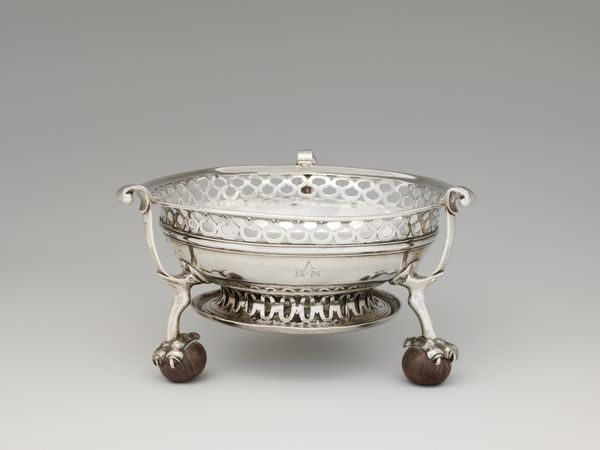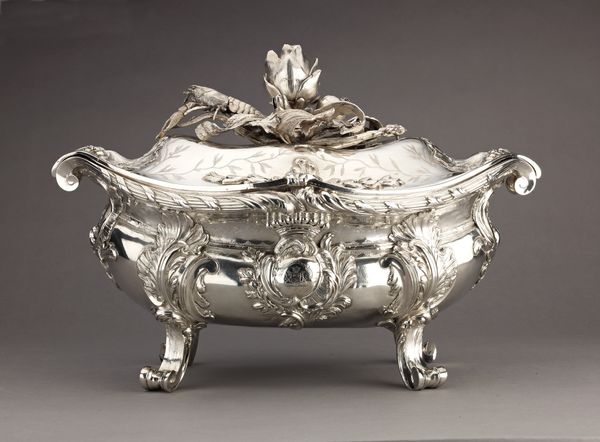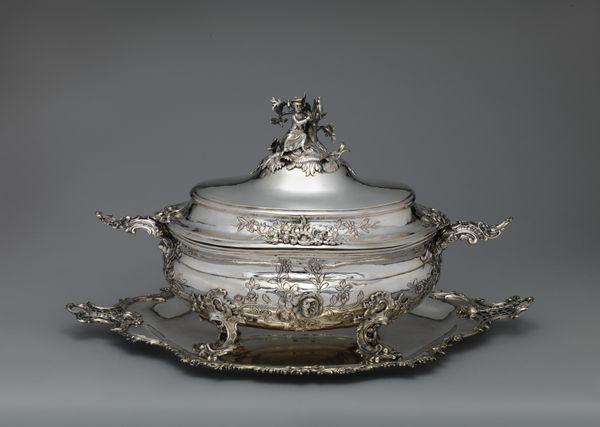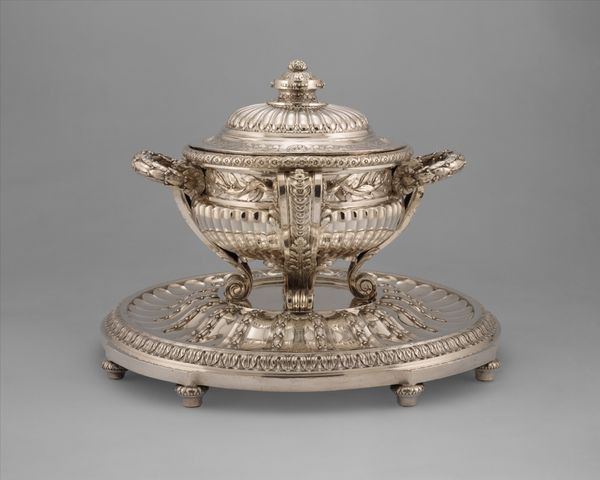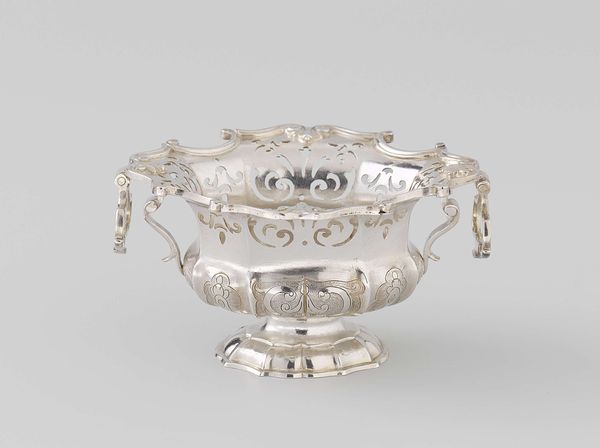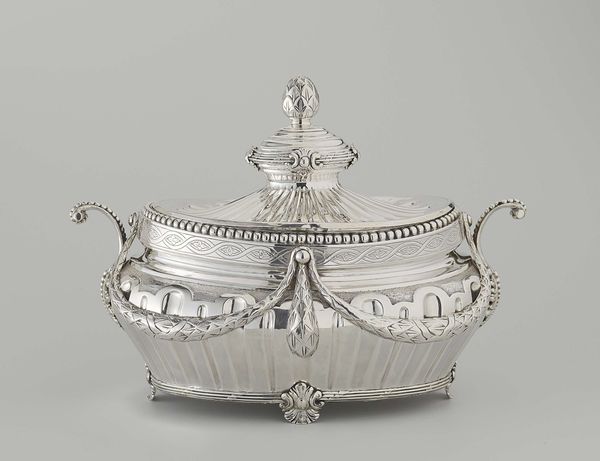
Dimensions: Overall (wt. confirmed): 11 3/4 × 16 in., 16.8 lb. (29.8 × 40.6 cm, 7.6 kg)
Copyright: Public Domain
Editor: This is Jacques-Nicolas Roettiers's "Tureen with cover," crafted from silver in 1775-1776. It resides at the Metropolitan Museum of Art. The details are just incredible. How would you begin to interpret the dense iconography? Curator: Well, first, consider the material. Silver, often associated with wealth and status, is here transformed into something functional but exquisitely ornamented. Think about what that says about societal values at the time. Does the abundance of vegetal motifs—leaves, vines—suggest anything to you? Editor: A connection to nature, certainly. Maybe abundance or fertility, things literally growing and flourishing. But does it symbolize something more? Curator: Indeed. Consider Rococo's penchant for organic forms and asymmetry, reflecting a desire to break from rigid, classical structures. The imagery carries meanings. Grapevines, for instance, historically allude to Bacchus, or Dionysus, a sign of celebration and possibly divine power depending on where such images appear and in what culture. And the sculptural quality. Doesn’t that elevation of function to fine art change its essential symbolism for you? Editor: Absolutely! The transformation from simple vessel to ornate sculptural piece makes you think about luxury, certainly, but also about how symbols evolve in meaning with artistic technique. Curator: Exactly! And each detail plays its part. Even the legs, notice how they end with the spiral feet that signal growth, but inward movement as if holding ground. These artistic liberties were social signs, showing education, power and position. The form, though ostensibly simple in concept, has roots reaching deep into shared, social meaning. Editor: That makes you consider the context – the wealthy aristocracy enjoying lavish feasts – rather than just admiring the craftmanship. Curator: Precisely. It becomes a tangible record, connecting us to their world, their beliefs, their obsessions, making us think about cultural continuity. Editor: Looking at the tureen, I can now see more of its connection to both a social ritual, and a much older tradition of using nature to reflect both prosperity and connection to the divine. Thanks for helping to illuminate its history!
Comments
No comments
Be the first to comment and join the conversation on the ultimate creative platform.

